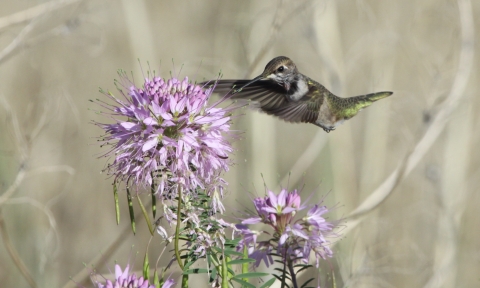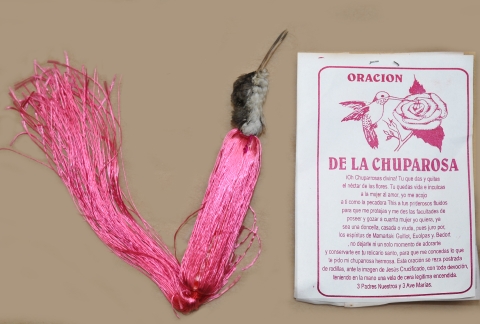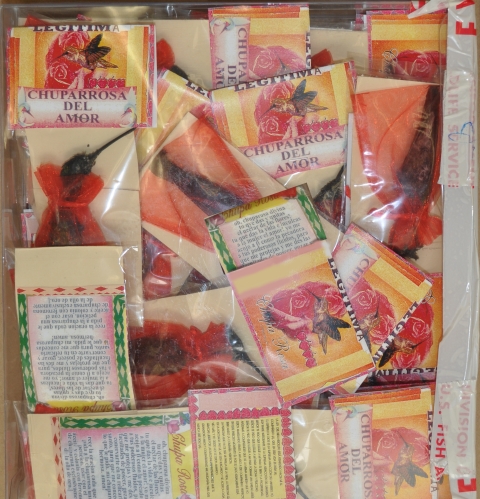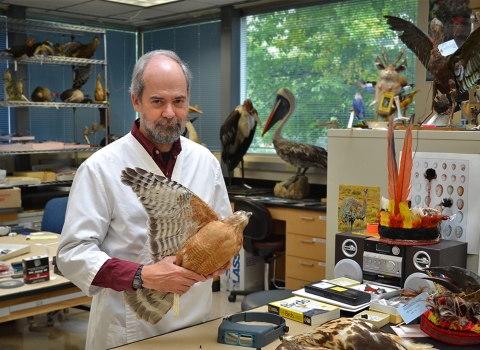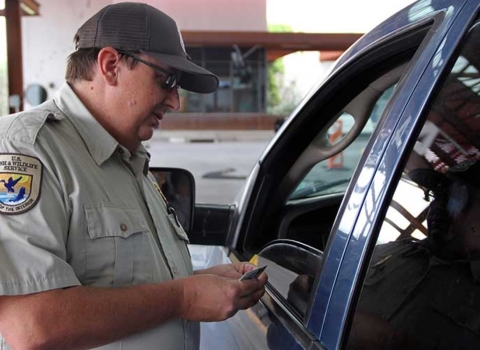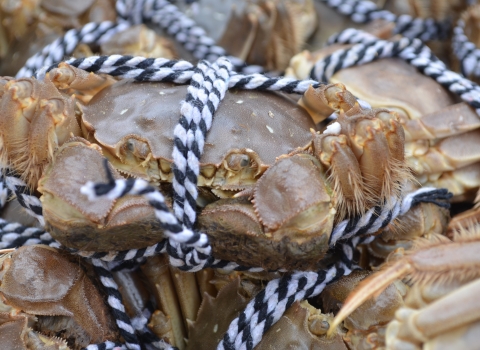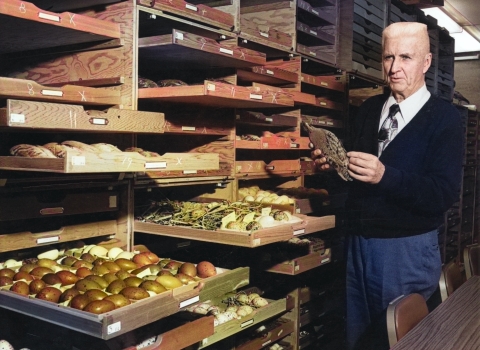Hummingbirds are the smallest bird species weighing between 2 to 20 grams each, exist solely in the Americas, and live an average of five years. Named for the sound their lightning-quick wings produce in flight, hummingbirds are known and appreciated for their beautiful fluorescent colors, quick and agile flying abilities (including hovering, flying backward, and even upside down!), and their important role as pollinators. Most people enjoy watching them in their yards and some set up feeders or plant flowers to attract them.
Hummingbirds are also migratory birds and protected under the Migratory Bird Treaty Act (MBTA). Many species of hummingbirds make long migratory flights each year, sometimes thousands of miles, to overwinter in the tropics of South and Central America. There, they hold a different fascination for some of the local people.
Some Latin American cultures believe that hummingbirds possess strong mystical powers that can be used to cast powerful love spells. Hummingbirds are collected from the wild and used in love charms, called “chuparosas.” The demand for chuparosas is spreading from Mexico to shops in the United States, posing an additional threat to these small birds that already battle the effects of climate change climate change
Climate change includes both global warming driven by human-induced emissions of greenhouse gases and the resulting large-scale shifts in weather patterns. Though there have been previous periods of climatic change, since the mid-20th century humans have had an unprecedented impact on Earth's climate system and caused change on a global scale.
Learn more about climate change and habitat destruction. On any given day, hummingbirds may be found in markets throughout Mexico. The exact toll this market has taken on hummingbird populations is unknown (of the 58 species found in Mexico, 13 are threatened and five are endangered), but their indiscriminate collection certainly does not bode well for these avian gems.
The U.S. Fish and Wildlife Service’s Office of Law Enforcement became aware of the burgeoning U.S. chuparosa market several years ago, when wildlife inspectors and special agents discovered shipments containing dried hummingbirds packaged for sale in commercial quantities. Since then, FWS investigations in New Mexico, Texas, and even as far north as Minnesota have apprehended importers of these chuparosas in the U.S. Within a seven-year time span, Service agents recovered over 900 hummingbird specimens, and scientists at the Service’s National Fish and Wildlife Forensic Laboratory identified 20 species.
Smuggling hummingbirds into the U.S. from Mexico violates some individual state laws and several federal laws such as the MBTA and Lacey Act. It also violates the Convention on International Trade in Endangered Species of Wild Fauna and Flora (CITES), which is an international treaty enforced in the U.S. under the Endangered Species Act. In addition to the harm suffered by the individual animals, illegal importation of wildlife into the U.S. also risks the spread of zoonotic diseases to endemic wildlife and human populations.
By Lori Choquette, Special Agent in Charge of the Service’s Wildlife Intelligence Unit
This story is part of our Open Spaces blog.

